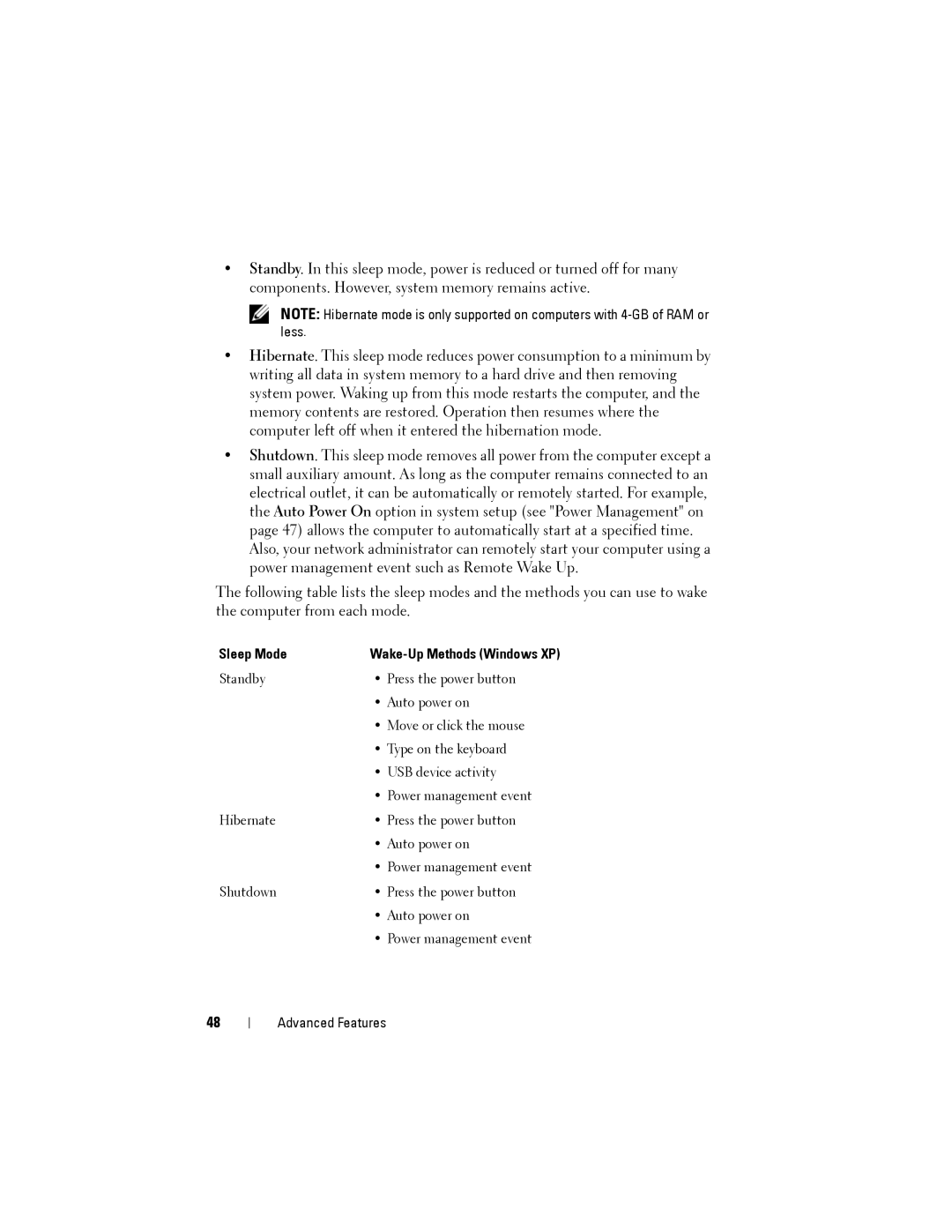•Standby. In this sleep mode, power is reduced or turned off for many components. However, system memory remains active.
NOTE: Hibernate mode is only supported on computers with
•Hibernate. This sleep mode reduces power consumption to a minimum by writing all data in system memory to a hard drive and then removing system power. Waking up from this mode restarts the computer, and the memory contents are restored. Operation then resumes where the computer left off when it entered the hibernation mode.
•Shutdown. This sleep mode removes all power from the computer except a small auxiliary amount. As long as the computer remains connected to an electrical outlet, it can be automatically or remotely started. For example, the Auto Power On option in system setup (see "Power Management" on page 47) allows the computer to automatically start at a specified time.
Also, your network administrator can remotely start your computer using a power management event such as Remote Wake Up.
The following table lists the sleep modes and the methods you can use to wake the computer from each mode.
Sleep Mode | |
Standby | • Press the power button |
| • Auto power on |
| • Move or click the mouse |
| • Type on the keyboard |
| • USB device activity |
| • Power management event |
Hibernate | • Press the power button |
| • Auto power on |
| • Power management event |
Shutdown | • Press the power button |
| • Auto power on |
| • Power management event |
48
Advanced Features
